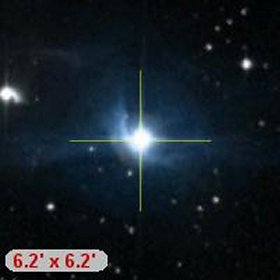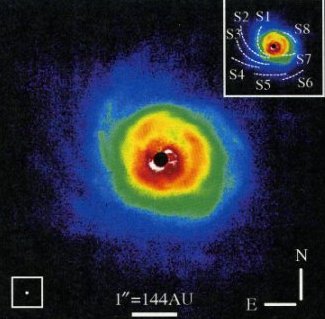
 |
AB Aurigae and its associated reflection nebula. The still-forming star is at the edge of the Taurus-Auriga dark molecular cloud. (SIMBAD) |
 |
The face-on disk surrounding AB Aurigae, seen here in infrared light (with the star itself at center blocked out), is 210 Astronomical Units in diameter and contains a mysterious multi- armed spiral structure. Though a gap in the disk once suggested a planet, none has actually been found, though planets would not be surprising. The upper inset sketches the arms, while the lower one shows the image resolution. (From a paper by J. Hashimoto et al. in Astrophysical Journal Letters 729:L17, 2011.) |